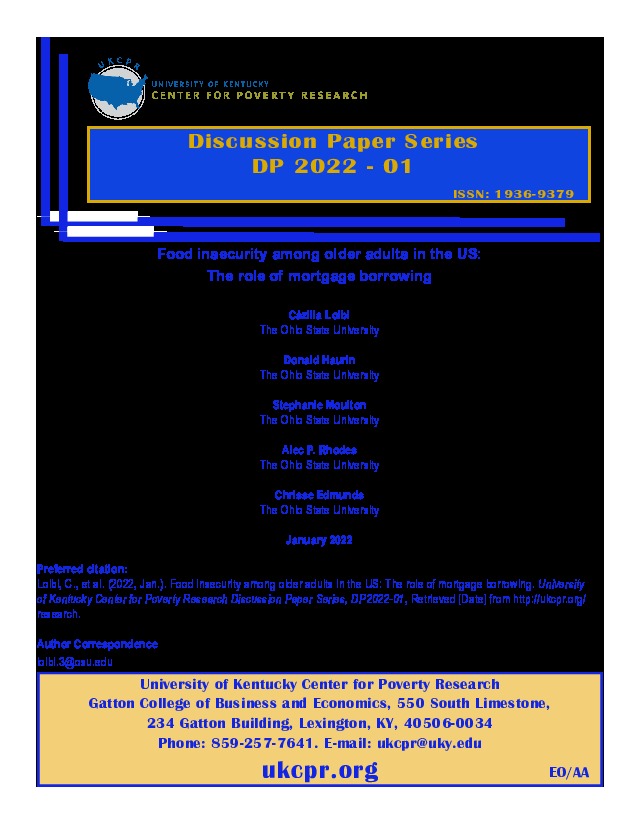Housing wealth is the primary source of wealth for many older adults, particularly those with lower incomes, who are more at risk of severe forms of economic hardship such as food insecurity. For housing wealth to directly improve food insecurity, it first must be liquefied. Understanding the role of housing wealth requires careful consideration of home equity and mortgage borrowing. A primary contribution of our report is to model the financial mechanisms through which housing wealth and its components—home value, home equity, and mortgage debt—affect food insecurity in older age. We use panel data on households from the Health and Retirement Study and instrumental variable linear probability models with household fixed-effects to assess the effects of new mortgage borrowing on food insecurity (N=20,421 household-years). Trend analyses reveal that food insecurity increased from the 2008 recession until 2014 and that new mortgage borrowing peaked prior to the recession. The proportion of older homeowners facing credit constraints is highest for those age 65 to 69 in all years. Regression results show that mortgage borrowing has a substantial short-term negative effect on food insecurity. Each additional $10,000 borrowed is associated with reduction of food insecurity of 2.2 percentage points. The effect of new mortgage borrowing on food insecurity is distinct from changes in house prices or changes in home equity, neither of which are statistically significant factors. In a simulation of the effects of relaxing the debt-to-income borrowing constraint, we find that food insecurity is reduced by 2.1 percentage points for previous non-borrowers and by 1.6 percentage points for borrowers. Results support the importance of access to mortgage borrowing to reduce material hardship in older age.
Research
SeniorsPDF Thumbnail
